7 Most Missed Foods and Drinks from the 60s, 70s, and 80s That Will Make You Nostalgic
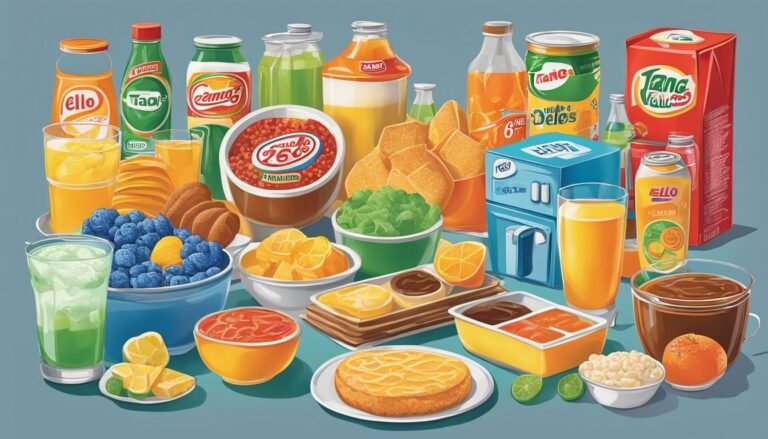
Walking down memory lane, you often find yourself reminiscing about the foods and drinks that defined your childhood.
There is something magical about those retro flavors and textures that today’s options just can’t replicate.
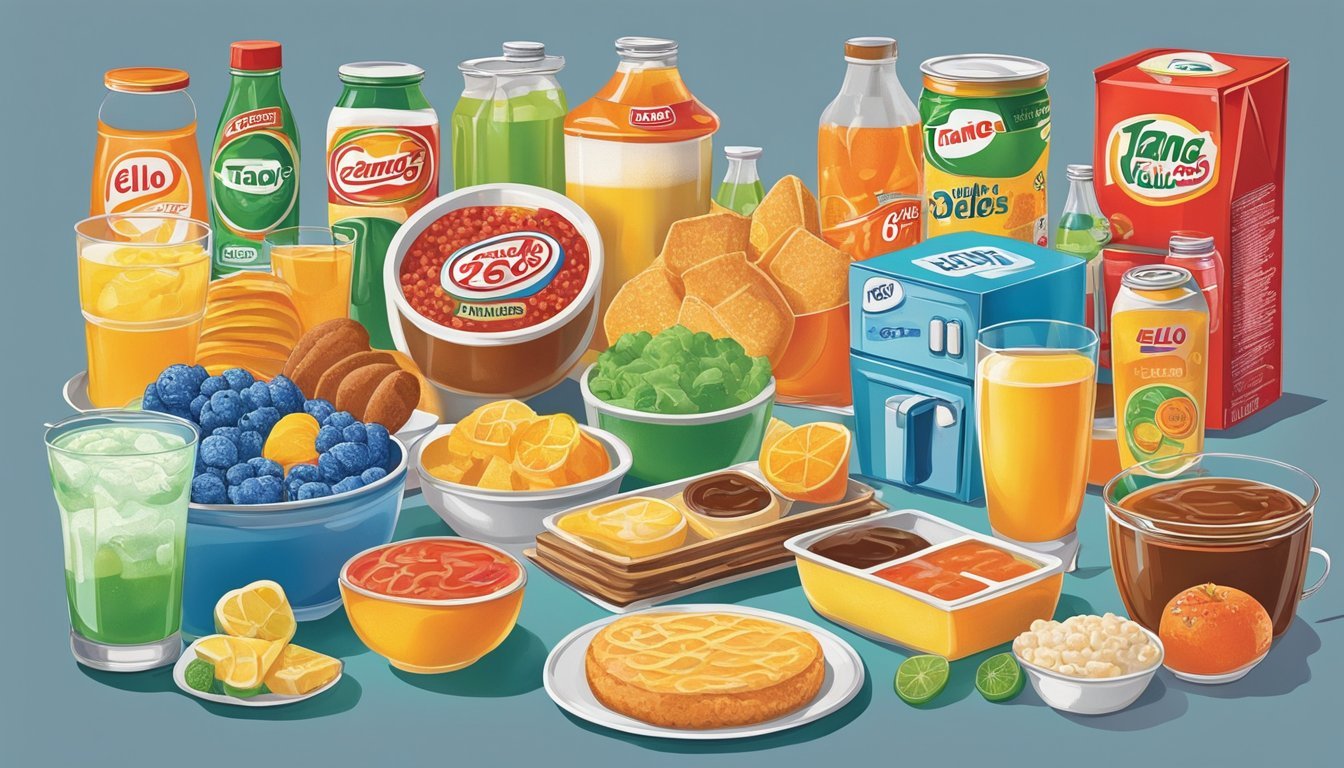
These cherished treats from the 60s, 70s, and 80s are more than just food; they are a gateway to simpler times and fond memories. Whether it was a snack you enjoyed after school or a special dessert your family made on holidays, these lost culinary treasures hold a special place in your heart.
1) Tang
Tang is a powdered orange drink mix that first came out in 1959.
It gained real fame in the 1960s when NASA used it on space missions.
You might remember it from your childhood, and it’s one of those drinks that takes you right back to the good old days.
The powder came in a bright orange container.
You just added water and gave it a good stir.
Its artificial orange flavor was a unique taste that many loved.
Tang wasn’t just for kids; even astronauts drank it!
Tang commercials often featured cartoon characters, like the Looney Tunes gang, making it even more appealing to children.
It was a fun and different way to enjoy a drink.
Though not as popular now, Tang still holds a special place in many hearts.
It reminds people of simpler times and exciting space adventures.
If you grew up in the 60s, 70s, or 80s, you probably have a memory or two that involves Tang.
2) Tab
Tab was one of the first diet sodas, hitting the market in the 1960s.
It was introduced by Coca-Cola and quickly gained popularity.
You might remember its distinctive pink can and sweet flavor, made with saccharin.
It had a unique taste that you either loved or hated, but it definitely stood out.
In the ’70s and ’80s, Tab was a go-to for those wanting a low-calorie soda option.
It was everywhere—vending machines, grocery stores, and diners.
You’d see it at parties and picnics too.
By the ’90s, its popularity began to fade as Diet Coke took over the diet soda market.
Despite losing its top spot, Tab still has a nostalgic place in many people’s hearts.
Some fans were disappointed when Coca-Cola finally discontinued Tab in 2020.
Its legacy, though, lives on in memories and retro pop culture references.
If you ever had a can of Tab, you know it wasn’t just a soda; it was an icon of its time.
3) Jell-O 1-2-3
Jell-O 1-2-3 was a unique and fun dessert that first hit the shelves in 1969.
It was like magic in a box.
When you made it, the mixture divided itself into three layers: a jiggly gelatin base, a creamy middle, and a frothy top.
You could choose from flavors like Orange, Strawberry, and Mixed Berry.
Setting up Jell-O 1-2-3 felt like a mini science experiment in your kitchen.
Just mix, pour, and watch as it transformed in the fridge.
Kraft hoped it would be a big hit, and it was popular for some time.
But by the mid-1980s, the excitement began to fade.
People preferred simpler desserts, and sales dropped.
Kraft discontinued Jell-O 1-2-3 in 1996.
Many who enjoyed it miss the fun and nostalgia of that three-layered treat.
It’s a fond memory of a time when desserts were a bit more playful.
4) Hi-C Ecto Cooler
If you were a kid in the ’80s or ’90s, you probably remember Hi-C Ecto Cooler.
This neon green drink was made famous thanks to the “Ghostbusters” cartoon.
The box featured Slimer, the green ghost, which made it even cooler.
Ecto Cooler was actually a rebranded version of Hi-C’s Citrus Cooler.
Though it debuted in the late ’80s, it quickly became a nostalgic favorite.
The drink had a unique flavor blend of tangerine and orange juices.
Kids loved it because it was more than just a tasty drink—it was tied to a popular franchise.
It wasn’t just about quenching your thirst; it was about living in the Ghostbusters world.
Ecto Cooler continued to be popular through the ’90s.
Fans were so nostalgic about Ecto Cooler that it had several comebacks, the most recent in special giveaways on social media.
Every time it returned, people rushed to get their hands on it, hoping to relive a piece of their childhood.
Even if you didn’t grow up in that era, chances are you’ve heard about Ecto Cooler through pop culture.
It’s one of those drinks that has stood the test of time, making it a much-missed favorite.
5) Space Food Sticks
Space Food Sticks were a unique snack from the late 1960s and early 1970s.
Created for astronauts, these chewy, cylindrical snacks were designed to be both nutritious and easy to eat in space.
Pillsbury developed them under a government contract.
These sticks became popular on Earth too.
Kids loved the idea of eating the same food as astronauts.
With a texture similar to Tootsie Rolls, they came in flavors like peanut butter and chocolate.
Space Food Sticks were marketed as energy snacks.
They were even taken aboard missions like Apollo and Skylab.
The excitement around the space race helped make these snacks a hit.
They were part of the space-age fascination that gripped the world.
By the 1980s, the thrill had faded.
Space Food Sticks were discontinued, leaving many nostalgic for this tasty piece of space history.
6) Hubba Bubba Bubble Gum
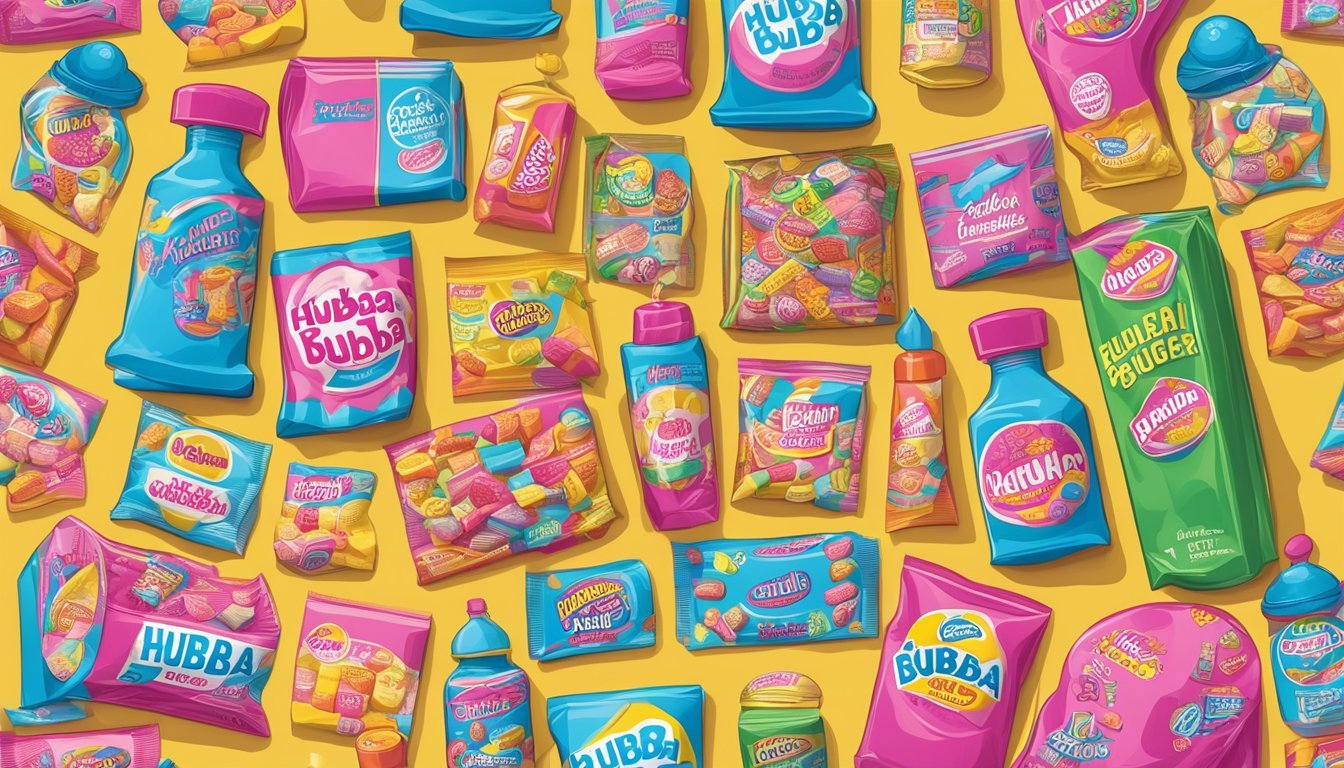
Hubba Bubba Bubble Gum hit the market in the late 1970s.
It quickly became a favorite among kids due to its fun, oversized cubes.
The gum was brightly colored and came in a variety of flavors, making it an instant classic.
One of the coolest things about Hubba Bubba was its ability to blow huge bubbles.
You probably tried to see how big a bubble you could get before it popped.
That was part of the fun!
The brand later faced tough competition, especially from another popular bubble gum, Bubblicious.
Despite that, many still remember Hubba Bubba fondly.
It’s hard to forget a gum that was so much a part of your childhood.
Even though the original flavor lineup is gone, you can still find some versions today.
But it’s just not the same as having those big chunks of bubble-blowing magic.
Do you miss those days?
7) Oreo Big Stuf
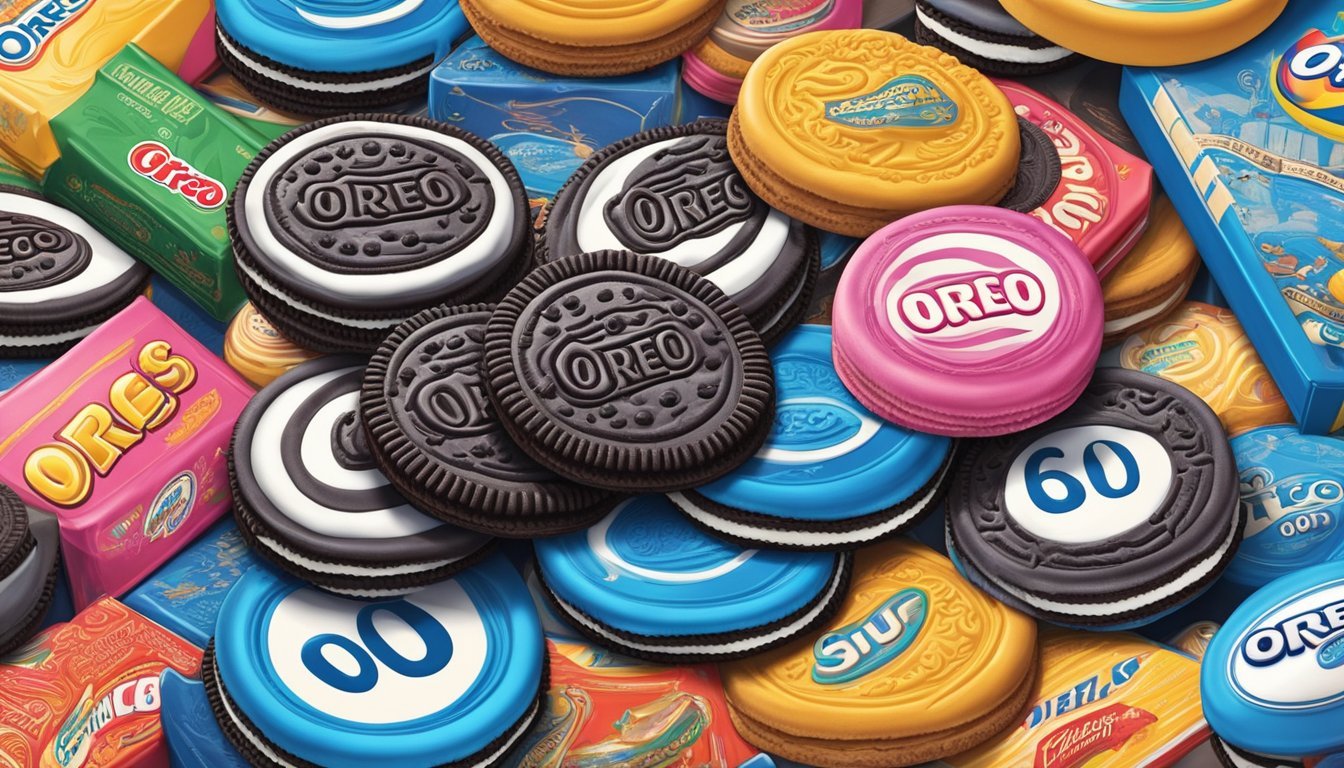
Remember the Oreo Big Stuf? This oversized cookie was introduced in the late 1980s.
It was massive, with a diameter of around three inches.
Each Big Stuf had 316 calories and 13 grams of fat.
It was individually wrapped, making it easy to take on the go or toss in your bag.
Kids and adults alike loved it because it had lots of that sweet, creamy Oreo filling.
It was about ten times the size of a regular Oreo, making it almost a meal by itself.
Even though it was popular, it didn’t stick around for long.
Oreo Big Stuf was discontinued in the early 1990s.
You might still hear people talking about it, especially those who were kids back then.
The cookie is definitely missed, and it’s one of those nostalgic ’80s snacks people would love to see come back.
Cultural Influence on Food Trends
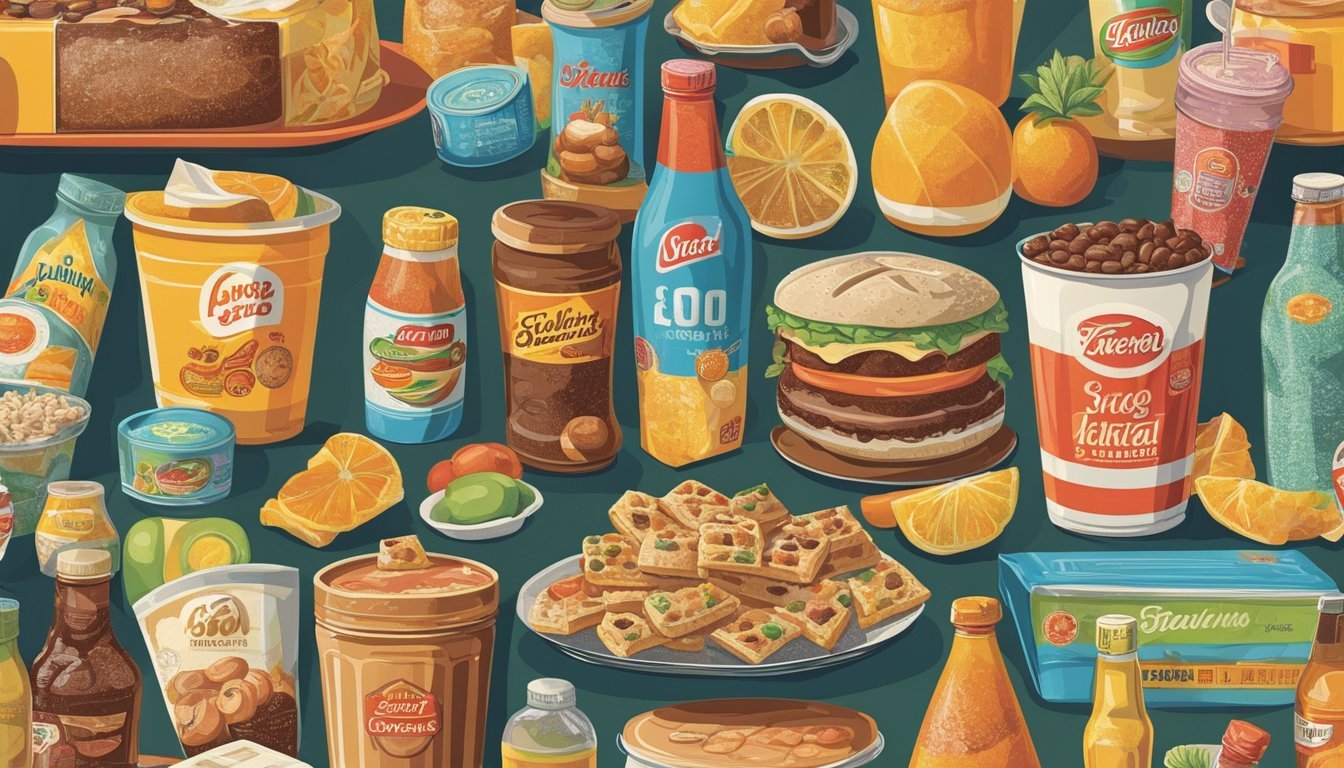
In the 60s, 70s, and 80s, what you ate was often shaped by what you saw on TV, read in magazines, or experienced in social settings.
Global events also played a huge part in changing food trends and habits.
How Pop Culture Shaped Tastes
TV shows, movies, and celebrities greatly influenced what you wanted to eat.
Shows like Mad Men showcased cocktail parties featuring foods like deviled eggs and fondue.
These became trendy and were must-haves at social gatherings.
Magazines and advertising also promoted these trends.
You saw colorful spreads of gelatin molds, and unique snacks which looked modern and exciting.
Ads made these foods seem essential for any fashionable household.
Celebrities endorsed certain products, making them more appealing.
For example, instant foods and TV dinners gained popularity because they were shown as convenient and modern.
The idea of quick meals fit well with the busy lifestyles portrayed in pop culture.
Impact of Global Events
The political and social changes of these decades also had a strong impact.
During the 60s, the rise of counterculture movements led to a surge in health foods.
Hippie culture brought foods like brown rice and tofu into the mainstream, as people started paying more attention to what they consumed.
In the 70s, the oil crisis led to economic changes which shifted food production and consumption.
Families relied more on convenience foods like frozen dinners and fast food.
This period also saw the introduction of more exotic foods from different cultures as people traveled more and immigrants brought their culinary traditions with them.
The 80s saw an increased emphasis on health and fitness, with low-fat diets becoming popular.
This was partly due to growing concerns about heart disease and other health issues.
You started seeing more products labeled as “light” or “diet,” and foods that once seemed indulgent became less desirable to health-conscious consumers.
Iconic Food and Drink Brands
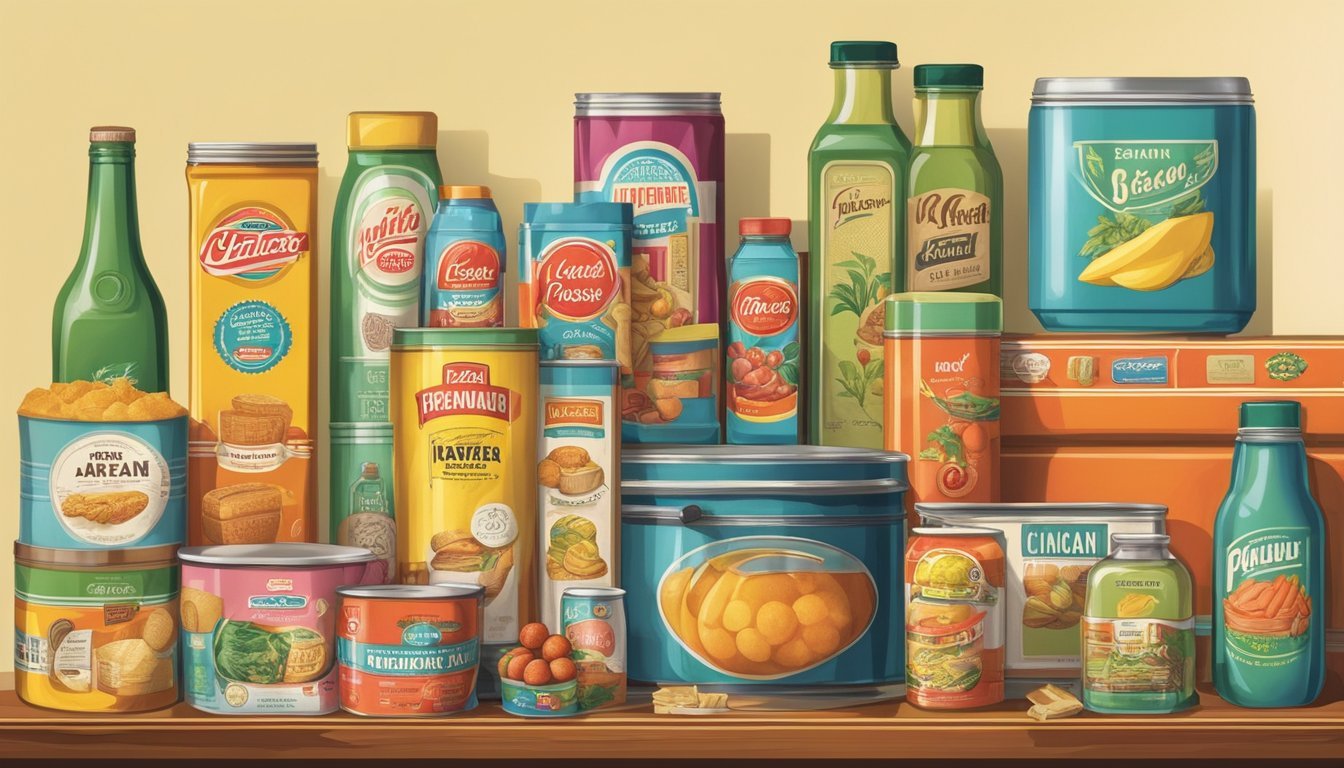
In the ’60s, ’70s, and ’80s, several food and drink brands stood out for their originality and impact.
These brands shaped how we eat and drink today, leaving a lasting legacy.
Rise of Fast Food Chains
During these decades, fast food chains exploded in popularity. McDonald’s was already pioneering fast food with its Big Mac and Chicken McNuggets by the late ’60s.
Its golden arches became an iconic symbol recognized worldwide.
Burger King introduced the Whopper, giving McDonald’s some serious competition.
You might also remember Wendy’s, famous for their square hamburgers and “Where’s the beef?” commercials.
Kentucky Fried Chicken (KFC) brought Colonel Sanders’ secret recipe to the masses, and their buckets of fried chicken became a family favorite.
Meanwhile, Taco Bell spiced things up with its crunchy tacos and burritos, making Mexican-inspired fast food widely accessible.
Pizza Hut and Domino’s made pizza delivery an expected service, transforming pizza from a rare treat to a weekly staple.
These chains not only offered new foods but also introduced convenience and speed, changing dining habits forever.
Memorable Beverage Brands
The drink scene saw plenty of memorable brands too.
In the late ’70s, Pepsi launched Aspen Soda, a crisp apple-flavored soda that was later replaced by Apple Slice.
Though short-lived, it left a sweet memory for many.
Coca-Cola gave us New Coke in the mid-’80s, which was a notable flop, but the incident rekindled love for the original Classic Coke. Jello Pudding Pops were another beloved treat, often associated with summertime fun and iconic TV commercials.
Then there were the sodas that came and went, like Crystal Pepsi and Clearly Canadian, each unique in its own way.
Many of these drinks captured the essence of their eras, offering flavors and experiences that were instant hits with kids and adults alike.
Nostalgic Marketing and Packaging
If you grew up in the ’60s, ’70s, or ’80s, you probably remember some pretty cool and quirky packaging.
Brands used bright colors, fun fonts, and memorable characters to grab your attention.
Bright Colors: Bold and flashy colors were used to make products stand out on store shelves.
Think neon greens, yellows, and pinks.
Fun Fonts: Packaging often featured funky, playful fonts that were easy to spot.
They made the products look exciting and fun to use.
Memorable Characters: Many brands had mascots or characters that made their products feel like friends.
You might remember Tony the Tiger or the Kool-Aid Man.
Retro Designs Today: Many brands are bringing back these old designs.
For example, Bazooka Bubble Gum used 1980s graphics for its 75th anniversary.
It’s a way to connect with old fans and attract new ones.
- Cheese Straws: These often came in bright, patterned tins that made them perfect for parties.
- Carnation Breakfast Bars: Their simple, colorful wrappers made them easy to spot in your lunchbox.
Remember how exciting it was to unwrap a candy bar or a snack? The packaging played a big role in that.
Today, you can still find products that celebrate this nostalgic marketing style.
It’s not just about the food; it’s about the memories that come flooding back when you see that familiar packaging.

